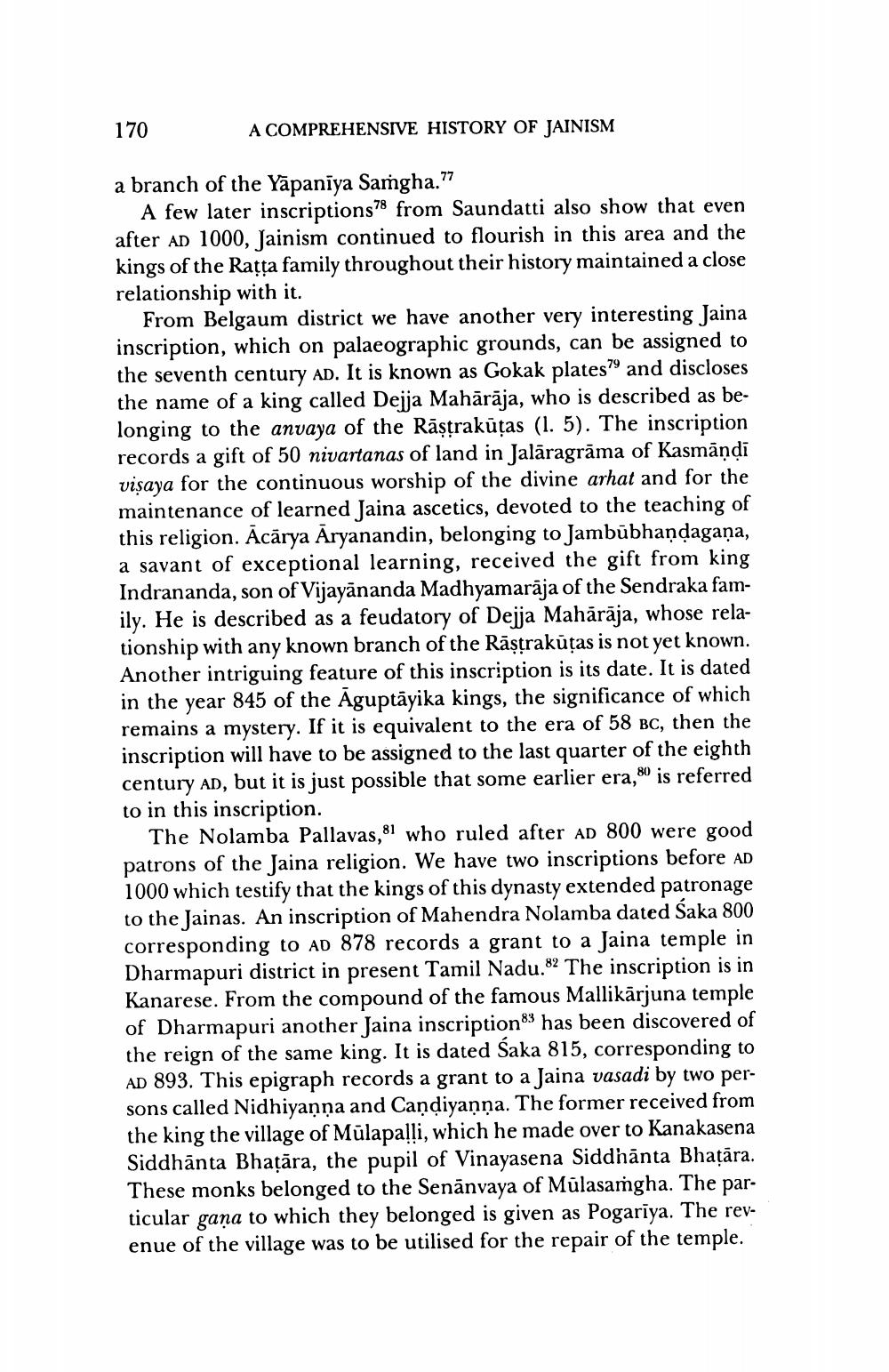________________
170
A COMPREHENSIVE HISTORY OF JAINISM
a branch of the Yāpaniya Saṁgha.??
A few later inscriptions78 from Saundatti also show that even after an 1000, Jainism continued to flourish in this area and the kings of the Ratta family throughout their history maintained a close relationship with it.
From Belgaum district we have another very interesting Jaina inscription, which on palaeographic grounds, can be assigned to the seventh century AD. It is known as Gokak plates79 and discloses the name of a king called Dejja Mahārāja, who is described as belonging to the anvaya of the Rāstrakūtas (1. 5). The inscription records a gift of 50 nivartanas of land in Jalāragrāma of Kasmāņdi vişaya for the continuous worship of the divine arhat and for the maintenance of learned Jaina ascetics, devoted to the teaching of this religion. Acārya Aryanandin, belonging to Jambūbhandagaña, a savant of exceptional learning, received the gift from king Indrananda, son of Vijayānanda Madhyamarāja of the Sendraka family. He is described as a feudatory of Dejja Mahārāja, whose relationship with any known branch of the Rāstrakūtas is not yet known. Another intriguing feature of this inscription is its date. It is dated in the year 845 of the Āguptāyika kings, the significance of which remains a mystery. If it is equivalent to the era of 58 BC, then the inscription will have to be assigned to the last quarter of the eighth century AD, but it is just possible that some earlier era,80 is referred to in this inscription.
The Nolamba Pallavas, 81 who ruled after ad 800 were good patrons of the Jaina religion. We have two inscriptions before AD 1000 which testify that the kings of this dynasty extended patronage to the Jainas. An inscription of Mahendra Nolamba dated Saka 800 corresponding to AD 878 records a grant to a Jaina temple in Dharmapuri district in present Tamil Nadu.82 The inscription is in Kanarese. From the compound of the famous Mallikārjuna temple of Dharmapuri another Jaina inscription83 has been discovered of the reign of the same king. It is dated Saka 815, corresponding to AD 893. This epigraph records a grant to a Jaina vasadi by two per sons called Nidhiyaņņa and Candiyaņņa. The former received from the king the village of Mūlapalli, which he made over to Kanakasena Siddhānta Bhatāra, the pupil of Vinayasena Siddhānta Bhatāra. These monks belonged to the Senānvaya of Mūlasamgha. The particular gaņa to which they belonged is given as Pogariya. The revenue of the village was to be utilised for the repair of the temple.




